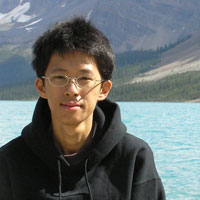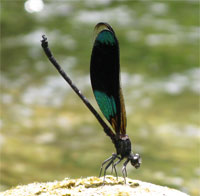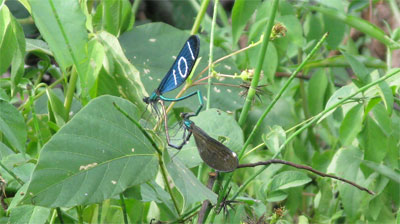We have moved to a new server!
Since March 2014, this website has been moved to this new server: http://web.ntnu.edu.tw/~treehopper/. This page will not be updated anymore. Please update your browser’s bookmark or the web links.
Member list
Current members
- Jo-Fan Wang
- 1. The Territorial Behavior of Euphaea formosa (Odonata). 2. Tempo and Mode of Pronotal Evolution in Membracis Treehoppers.
- Hung-Nien Chen
- Lan-Wai Yeh
- Ecology and evolution of Taiwanese Carabus ground beetles.
- Yun-Chieh Cheng
- What do damselfly larvae eat? DNA barcode analyses of larval diet in Matrona cyanoptera and Euphaea formosa.
- Chung-Hsin Huang
- Flucuating Asymmetry and Developmental Asymmetry of Cyclommatus mniszechi.
- Hui-Yun Tseng
- 1. Biological function of coloration in Pachyrrhynchus tobafolius. 2. Phylogeny and color evolution of Pachyrrhynchus weevils. 3. Population genetics of Pachyrrhynchus weevils on Lanyu and Green Island.
- I-Ting Hsiao
- Variation of genitalia in Euphaea amphicyana.
- Yen-Ting Chen
- The effect of forest management of Mt. Da-Shiue on the morphological variation of a ground beetle, Carabus (Apotomopterus) masuzoi.
- Jyun-Huei Huang
- The fighting behavior of a stag beetle, Rhaetulus crenatus.
- Shi-Ting Wu
- Membracis Phyllotropis.
- Chiao-Wei Lin
- The fighting behavior of a stag beetle, Rhaetulus crenatus.
- Yong-Chao Su
- Behavioral ecology, sociobiology, population genetics, and molecular phylogenetics.
Past members
- Wei-Liang Xiao
- Variation of wing veins in Euphaea amphicyana.
- Li-Wen Weng
- Why do firefly larvae emit light?
- Yat-Hung Lee
- Speciation of Euphaea damselflies.
- Che-Yu Kuan
- Variation of mandibles in stag beetles.
- Chu-Yen Cheng
- Phylogeography of a Philippine's treehopper, Leptocentrus reponens.
- Ming-Yu Chen
- Phylogeography and population history of the treehoppers, Centrochares horifficus from the Philippines Archipelago.
- Shao-Chang Huang
- Visual Communication of Matrona cyanoptera
- Jen-Pan Huang
- Population Genetics and Phylogeographic Analyses of Formosan Damselfly, Euphaea Formosa (Insecta: Odonata: Euphaeidae) from Taiwan
- Wei-Yun Chen
- Molecular and Phylogenetic Characterization of Endosymbiotic Bacteria of the Froghopper, Okiscarta uchidae (Insecta: Hemiptera: Cercopidae)
Visiting scholars and students
- Vanitha Williams
- Predatory potential of waterbug, Diplonychus rusticus and dragonfly, Diplacodes trivialis on mosquito larvae.
- Marina Vilenica
- Dragonfly composition (Insecta, Odonata) in wetland area of Turopolje region, Croatia
- Klaas-Douwe 'KD' B. Dijkstra
- History, diversity and identification of dragonflies and damselflies (Odonata).
- Erin McCullough
- " Diversification of weapon form: aerodynamic costs of beetle horns.
- Ashley E. King
- Intrasexual combat and intersexual antagonistic co-evolution in horned beetles.
Hung-Nien Chen

Title
Master Student 2009
Species: Euphaea amphicyana

Project
1. The effect of typhoon on survivalship of Matrona cyanoptera. 2. Modes of phenotypic variation in Euphaea amphicyana.
Abstrct
E-mail:the_god_of_nian@yahoo.com.tw
1. Survival Rate, Sex Ratio, and the Effect of a Typhoon on a Damselfly, Matrona cyanoptera (Calopterygidae) of Subtropical Taiwan
Population study investigates the change of species in time and space. Mark-recapture method is one of the most efficient ways to study population dynamics. Matrona cyanoptera is one of the most common damselflies in the lowland streams of Taiwan, but the basic life history of this species is still lacking. We estimated the longevity and movement in adult M. cyanoptera using mark-recapture method. The study site is a stretch of 300-meter stream located in Whow-Pai-Kun river of Nantou county. We marked 168 individuals and recorded 2,082 recapture data from July 3rd to October 25th of 2009. The results showed that the population size for M. cyanoptera during the study period was close to 1,061. The estimated average longevity of adults was 27.2±0.3 days and there was no significantly difference between sexes. The observed maximum longevity was 68 days for males, and 70 days for females. Maximum average range of movement was 103±95 meters. The survey was interrupted by Morakot typhoon from August 8th to 10th. Eighty-eight percent of previously marked individuals were absent at the study site. The sex ratio of adults was not significantly different before Morakot typhoon (p=0.13, ♂=21, ♀=32), but it was significantly different after Morakot typhoon (p<0.01, ♂=87, ♀=26). The results suggested that Morakot typhoon changed the sex ratio of this species, as well as having a great effect on local population size.

Mating of marked M. cyanoptera individuals.
2. Modes of phenotypic diversification in an endemic Philippine damselfly, Euphaea amphicyana (Odonata, Euphaeidae)
Phenotypic variation can result from either one or the combination of three main evolutionary processes: geographic isolation, sexual selection, and ecological segregation. Euphaea amphicyana is an endemic damselfly of the Philippines and exhibits extensive among-island variation in the shape and color of wings. This study investigates the preponderance of the above three evolutionary processes underlying the phenotypic diversification of E. amphicyana. We test three predictions: 1) Geographic isolation: the rate of morphological variation should be correlated with geographic distance and neutral rate of evolution. 2) Sexual selection: morphological characters presumably under sexual selection, such as wing coloration and genital fossa, should not be correlated with neutral evolution. 3) Ecological segregation: the character sets presumably under natural selection should not correlate with neutral evolution. The morphological measurement and molecular data were used to study the divergence of characters and reconstruct phylogenies. Internodal distances of morphological characters and molecular phylogenies will be compared using multiple correlation and ANOVA. The preliminary result of COII haplotype networks showed three distinct E. amphicyana groups across islands. Additional molecular markers, such as nuclear introns and microsatellite DAN, and morphological character sets will be developed.